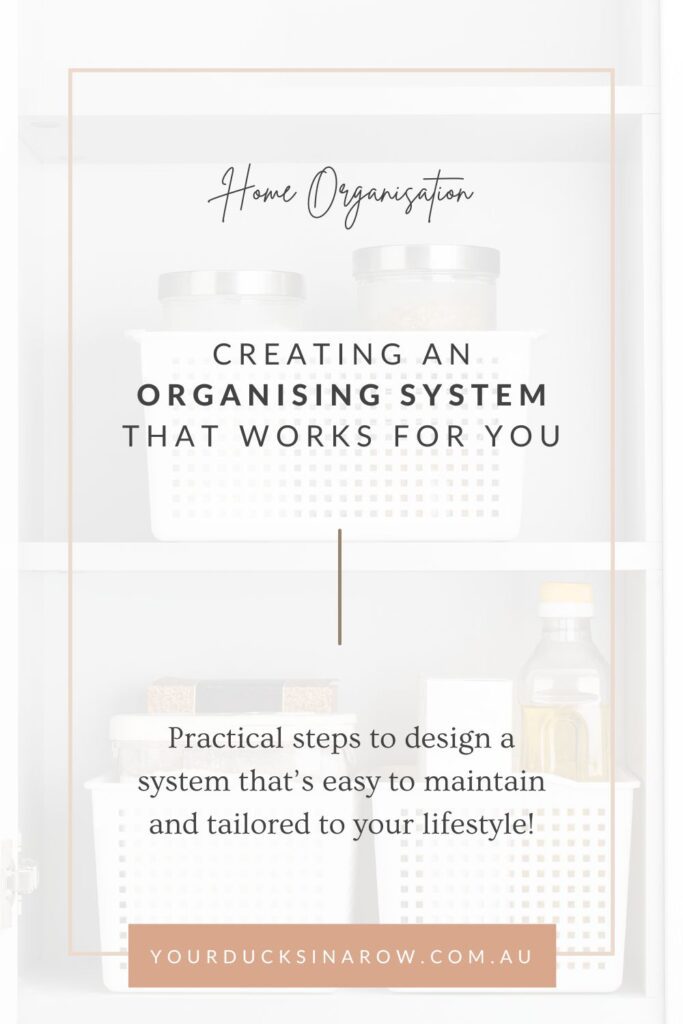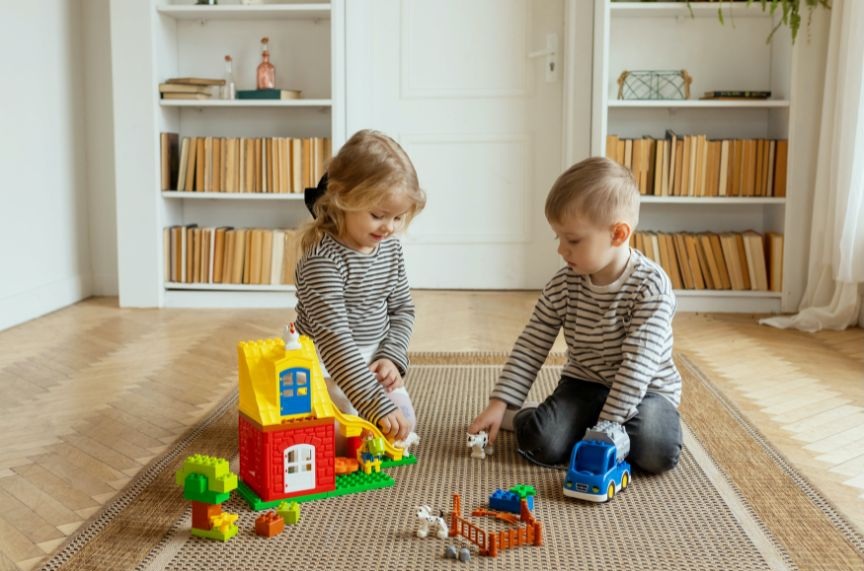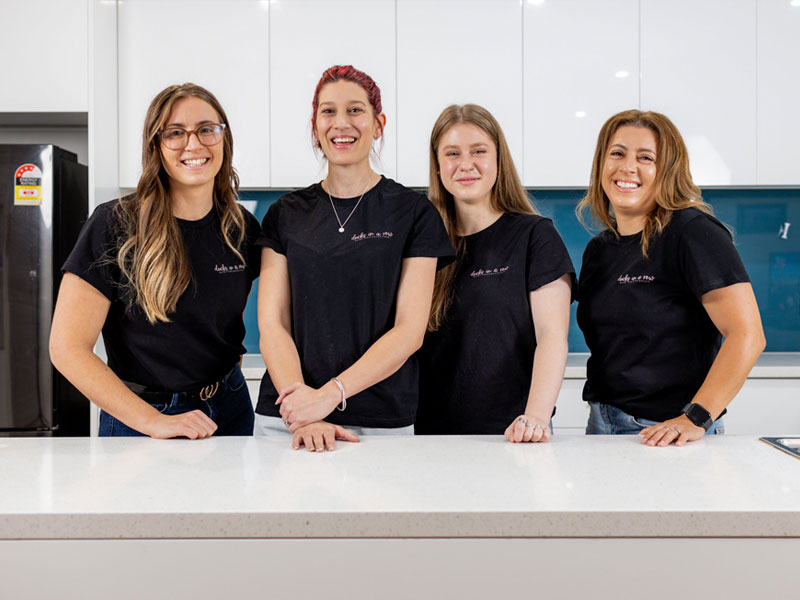An organised home isn’t about perfection, it’s about creating systems that support your lifestyle, save you time, and reduce daily stress. The key is to develop an organising method that fits your habits, not forces you to change them drastically.
Whether you’re tidying up a busy family home, a solo apartment, or a shared space, the right system can make all the difference. A good organising system becomes second nature, helping you find what you need, when you need it, without the constant cycle of tidying and re-tidying.
In this blog, we’ll explore how to build a tailored organising system that works for you, your space, and your routine. From assessing your needs to maintaining your new setup, we’ll guide you every step of the way, with practical tips, affordable product ideas, and a few clever tricks to make organisation stick.

Why Personalised Organisation Matters
Many people try to mimic organisation styles from Pinterest or home shows, only to find the systems don’t stick. That’s because every household is different. What works for a minimalist household might not suit a large family. Here’s why a personalised system is key:
- Custom-fit to your habits
- Easier to maintain over time
- Adapts as your needs evolve
- Saves time and stress
- Encourages consistency
By designing a system that matches your lifestyle, you increase your chances of success. Personalised organisation transforms daily routines into smooth operations, reducing mental load and making your home a place of calm and order. Whether you have toddlers or teens, pets or housemates, or just a hectic schedule, tailoring your system will be the game changer.
Step 1: Understand Your Habits and Lifestyle

Before you grab the label maker, start by observing how you and your household naturally function. Understanding your current habits is the foundation for designing a system that feels intuitive and easy to stick with.
- Where do you drop your keys?
- What areas always seem cluttered?
- What items do you use every day, weekly, or rarely?
- Who shares the space with you (kids, pets, roommates)?
Consider walking through a typical day and noting where clutter collects. Are there piles of paperwork on the dining table? Shoes at the front door? Toys in the lounge room? These clutter zones are clues to what needs better systems.
Tip: Spend a week noting your routines and clutter hotspots. This insight will shape your system’s design. You can even take photos or journal to help spot patterns. Involve other members of the household by discussing what’s working and what’s not.
Step 2: Declutter Before You Organise

There’s no point creating an organising system for things you don’t need. Decluttering first creates space, clarity, and a fresh canvas to work with. It also prevents you from spending time and money organising items that aren’t worth keeping.
- Sort items into Keep, Donate, Relocate, or Toss.
- Be honest, do you use it, love it, or need it?
- Let go of guilt-based items (like gifts you don’t love).
Start with one area, like a single drawer or a bathroom cabinet. Make quick decisions and avoid overthinking. Keep a donation box somewhere accessible and revisit it weekly.
Tip: Declutter by category or zone (e.g., pantry, wardrobe, paperwork). Tackling one area at a time makes it manageable. Use laundry baskets or tubs to physically move items into their designated piles. If you’re overwhelmed, set a timer for 15 minutes and aim for progress, not perfection.
Step 3: Define Your Zones and Categories

Think of your home in terms of activity zones: cooking, relaxing, working, dressing, etc. By defining zones, you give every item a “home” that aligns with where and how it’s used.
Examples:
- Coffee pods next to the kettle
- Pens and chargers near the work desk
- Sunscreen and hats near the front door
Walk through each room and identify its primary function. Then group items by category and match them to the relevant zone. This step reduces the friction of having to search for things and makes everyday routines more efficient.
Tip: Group like-items together. Categories help everyone in the household know where things go, making clean-up faster and more consistent. Use bins, trays, or drawer inserts to keep categories tidy within each zone. Use vertical space with wall hooks or over-the-door organisers to maximise functionality.
Step 4: Choose the Right Tools and Containers

The right storage makes your system easier to follow and maintain. You don’t need high-end products, just containers that are the right size, shape, and function for your space.
Must-haves:
- Clear containers so you can see what you have
- Labels (a must for multi-person households)
- Baskets, drawer dividers, tubs, and trays
Look at how you use items and store them accordingly. Everyday items should be visible and easy to access. Seldom-used items can be placed in higher or less accessible spots.
Tip: Shop places like Kmart, Officeworks, or Bunnings for affordable solutions. Before buying, measure your drawers or shelves so you don’t end up with mismatched sizes. Reuse what you already have first, shoe boxes, jars, and ziplock bags can be very effective.
Step 5: Keep It Simple and Accessible

Your organising system should reduce friction, not add it. If it’s too complicated, you (or your family) won’t stick with it. Make the system easy to use and maintain.
- Store everyday items at eye level or within reach
- Use open baskets for kids or elderly family members
- Avoid overfilling spaces, allow breathing room for ease of access
Accessibility is essential for sustainability. A system that’s too complex won’t last. For example, stackable containers are great, but if they’re hard to open or too tightly packed, they won’t be used.
Tip: Set physical limits. For example, designate one basket for scarves, when it’s full, it’s time to reassess. This helps curb future clutter. Apply this logic to categories like toys, magazines, pantry staples, and stationery.
Step 6: Label Everything

Labels take the guesswork out of tidying up and help others in the household maintain the system. They’re simple but powerful tools for clarity and consistency.
- Use a label maker, chalkboard labels, or printed tags
- Include pictures or colour-coding for young kids or non-readers
Labels reduce decision fatigue. When everything has a clearly marked place, the process of putting things back becomes second nature. This is especially useful in high-traffic areas like pantries, bathrooms, and shared bedrooms.
Tip: Label both the bin and the shelf it belongs on to avoid confusion. This is especially helpful in shared spaces like pantries or bathrooms. For children’s spaces, use visual labels like icons or stickers.
Step 7: Create a Maintenance Routine

Even the best systems need regular attention to stay functional. A maintenance routine ensures your space evolves with your lifestyle and doesn’t revert to chaos.
- Daily: Quick resets (5–10 mins) like returning items to their place
- Weekly: Reassess hot spots (15–30 mins) and tweak systems as needed
- Seasonally: Declutter and adjust storage based on weather, holidays, or changing needs
Consistency is key. You don’t need to do a massive overhaul every week, but small, regular habits will keep your home running smoothly. Pair tidying with other routines, like doing the dishes or folding laundry.
Tip: Add a family tidy-up session to your routine, it makes maintenance easier and teaches shared responsibility. Use timers or music to make it fun! Reinforce the routine with visual charts or checklists for younger children.
Organisation that Fits You

Your home should serve your life, not the other way around. The best organising systems are practical, easy to maintain, and adaptable. Whether you’re a parent juggling schedules or someone living solo in a studio apartment, the key is to make your space work smarter.
When organisation becomes part of your everyday rhythm, you’ll experience more peace, better focus, and less stress. It’s not about achieving perfection, but about creating calm and control.
Book your free consultation with Ducks in a Row Home Organisation and let us help you create a home that’s functional, beautiful, and tailored to how you live.


